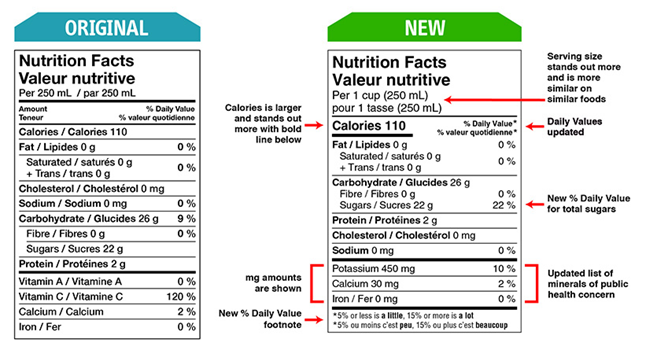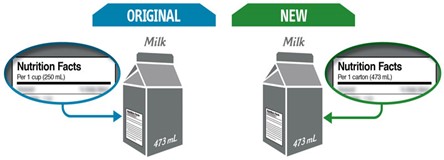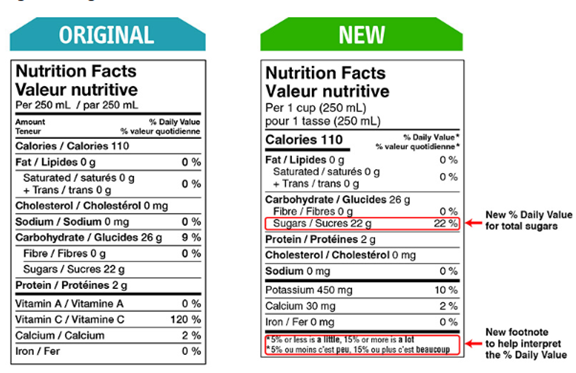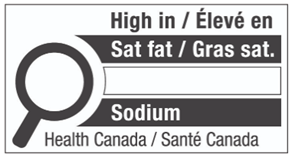Health Canada has improved the information in the Nutrition Facts tables/label on most packaged food we find in our grocery stores. The changes came from everyday people’s feedback. People want labels that are easier to read, have more realistic serving sizes and have more easily identified amounts of calories, sugar, salt, fats and nutrients.
Compare an older label (left) to the 2023 Nutrition Facts table (right) to see the changes:

To understand the updated label, let’s look at a situation you might find at the grocery store.
You are in the dairy aisle to purchase some milk and you look at the 473mL container. You want to know the calories and sugar for the entire 473mL because you know you will drink the whole container.

The older Nutrition Facts table (left) has the serving size of 250 ml (1 cup/8 oz) of the 473ml carton. The milk carton with the updated Nutrition Facts table has the serving size listed as 473 ml. This is helpful as most people will consume the whole milk carton.
In the Nutrition Facts table below, you can more easily see the calories on the new label because the print is bigger and has been underlined. It also shows the % Daily Value for total sugars so you can compare sugar content of different foods. The Daily Value (maximum recommended amount for an adult to consume each day) for sugars is 100 g per day. Foods with over 15% Daily Value should be eaten less often.

Front of Package Nutrition Symbol
Health Canada now requires a nutrition symbol on the front of packages of foods that have a lot of sodium (salt), sugars and/or saturated fat. Here is an example:

Starting in 2023, you will see this updated Nutrition Facts tables on the food you buy. All food product companies will make the changes to their products by December 2023. Check out the labels on the food you put into your cart the next time you’re at the grocery store.
Graphics from Health Canada
To learn more about food labelling, read the following articles:
Changes to the nutrition facts table (Health Canada)
What is nutrition labelling? (Health Canada)
Read these articles next:






